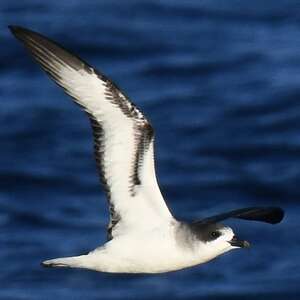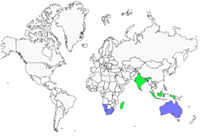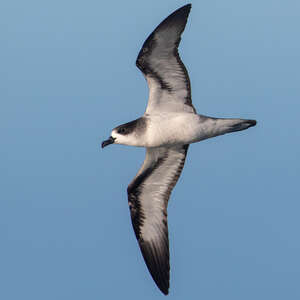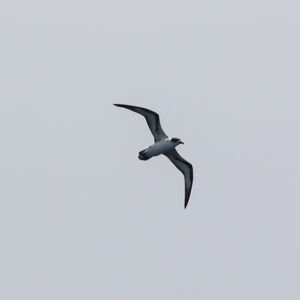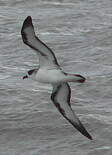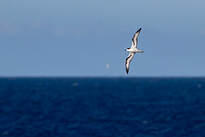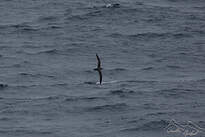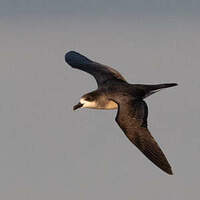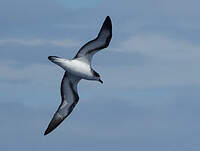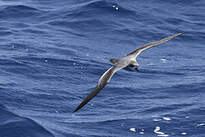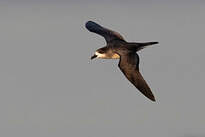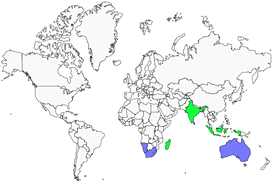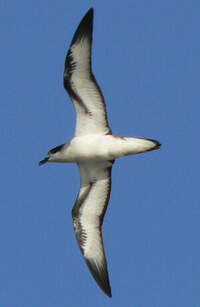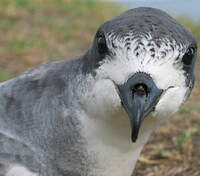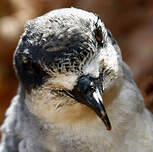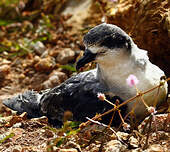Barau's Petrel
Pterodroma baraui - Pétrel de Barau
Identification
Subspecific information monotypic species
Foreign names
- Pétrel de Barau,
- Petrel de Barau,
- freira-da-reunião,
- Barausturmvogel,
- Barau-viharmadár,
- Baraus Stormvogel,
- Petrello di Barau,
- baraupetrell,
- Rodriguespetrell,
- tajfúnnik tmavotylový,
- buřňák réunionský,
- Réunionpetrel,
- reunioninviistäjä,
- Baraustormvoël,
- petrell de Barau,
- petrel wulkaniczny,
- Тайфунник Баро,
- Petrel barau,
- レユニオンシロハラミズナギドリ,
- 留尼汪圆尾鹱,
- 留尼旺圓尾鸌,
Behaviour character trait
Flight
Dietfeeding habits
Reproduction nesting
On the island of Réunion alone, Barau's Petrel forms burrow colonies in steep locations, particularly on the slopes of the Piton de la Fournaise.
Colonies form as early as December-January. The single egg's incubation lasts one month. The chick is fed regurgitated food by both parents who take long turns travelling immense distances for the food. After three months, the young bird exceeds the weight of its own parents by 30%. They then abandon it to its own devices and, after a period of weight loss, the young bird takes flight. This is usually around late April-early May.Geographic range
Threats - protection
IUCN conservation status
Extinct
Threatened
Least
concern
concern
Extinc
in the Wild
in the Wild
Near
threatened
threatened
Not
evaluated
evaluated
EX
EW
CR
EN
VU
NT
LC
NE
Barau's Petrel's endemism makes it very vulnerable to human activities and its consequences: first and foremost, predation by cats and rats. Artificial lighting also confuses young birds after they take off; they end up stranded far away from the ocean and cannot take off again. The Ornithological Society of Reunion (SEOR) runs campaigns to collect distressed birds and raise public awareness. It is estimated that the population of Barau's Petrels is between 3,000 and 5,000 pairs.
Sources of information
- IOC World Bird List (v14.1), Gill, F and D Donsker (Eds). 2024-04-18.
- Encyclopédie des oiseaux de France (fiches), Collectif - Rédaction NICOLLE Serge
Other sources of interest
 Specification sheet created on
03/08/2023 by Renan Levaillant
Specification sheet created on
03/08/2023 by Renan LevaillantTranslation by AI Oiseaux.net
published: 04-08-2013 - Updated: 06-08-2013
© 1996-2024 Oiseaux.net
- Accipitriformes
- Aegotheliformes
- Anseriformes
- Apodiformes
- Apterygiformes
- Bucerotiformes
- Caprimulgiformes
- Cariamiformes
- Casuariiformes
- Charadriiformes
- Ciconiiformes
- Coliiformes
- Columbiformes
- Coraciiformes
- Cuculiformes
- Eurypygiformes
- Falconiformes
- Galliformes
- Gaviiformes
- Gruiformes
- Leptosomiformes
- Mesitornithiformes
- Musophagiformes
- Nyctibiiformes
- Opisthocomiformes
- Otidiformes
- Passeriformes
- Pelecaniformes
- Phaethontiformes
- Phoenicopteriformes
- Piciformes
- Podargiformes
- Podicipediformes
- Procellariiformes
- Psittaciformes
- Pterocliformes
- Rheiformes
- Sphenisciformes
- Steatornithiformes
- Strigiformes
- Struthioniformes
- Suliformes
- Tinamiformes
- Trogoniformes

